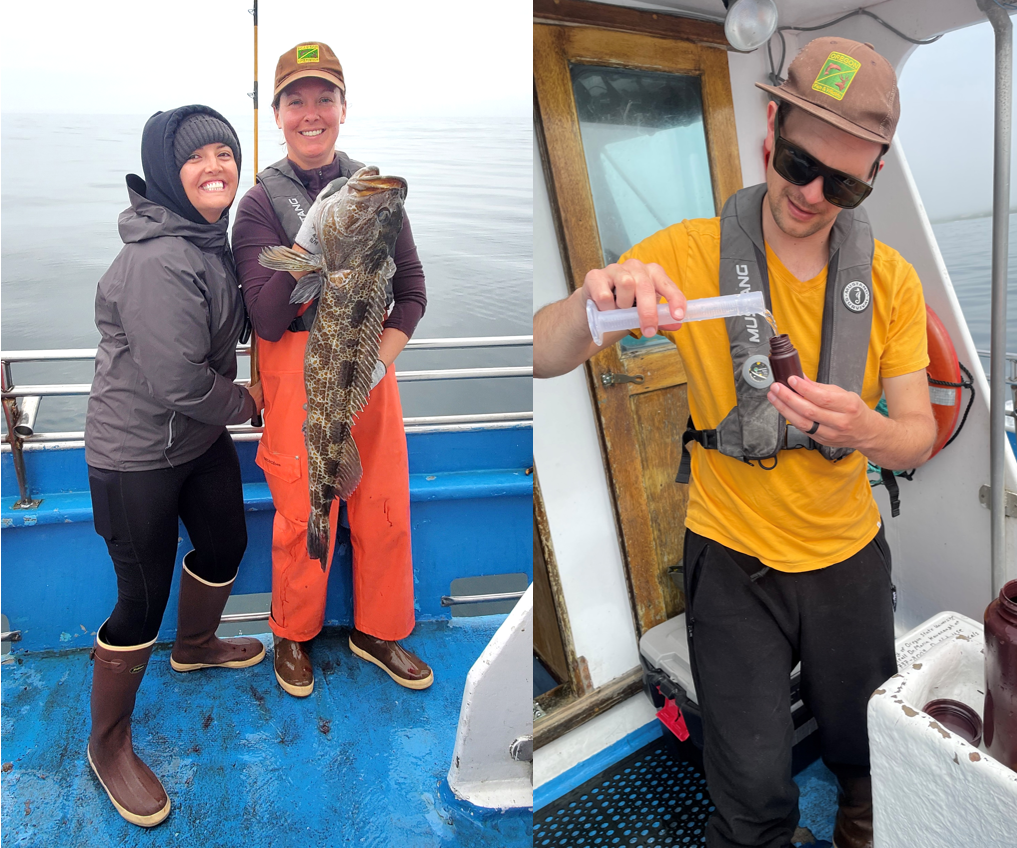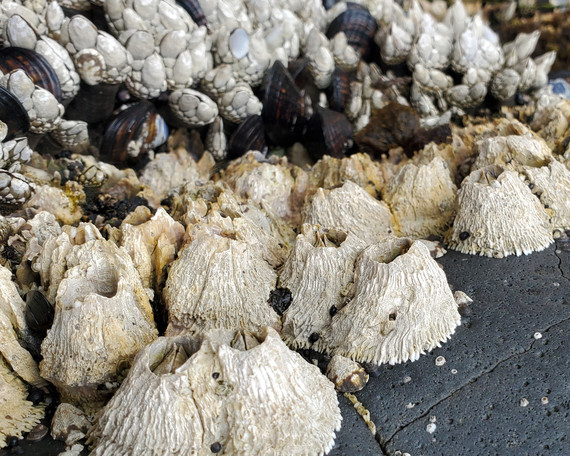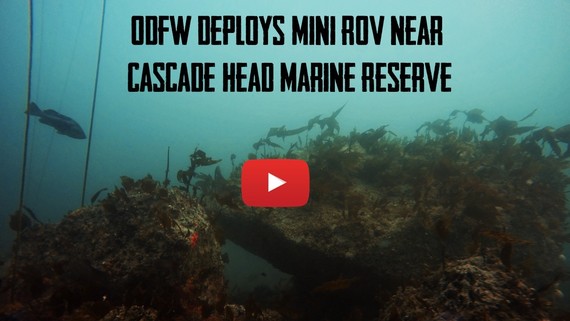Providing a Platform for Graduate Research
ODFW routinely supports new projects with some of the best and brightest graduate students. This summer we worked with graduate students from Oregon State University (OSU) to support two projects: one focused on improving data for management and the second focused on harmful algal blooms and their impacts on fisheries.
Photo: OSU graduate student Mee-ya Monneedy takes a stereo-photo of a Quillback Rockfish (Sebastes maliger) for her thesis research.
Mee-ya Monneedy, a current fisheries science master’s student with Dr. Scott Heppell at OSU, is working to develop alternate forms of electronic monitoring for Oregon’s recreational charter fleet. Her research utilizes stereo-photographs to identify, quantify, and measure recreational catch in Oregon’s nearshore bottomfish fishery and compare it to sampling data collected by ODFW staff's standard sampling techniques. If stereo images provide an enhanced method for data collection and fishery monitoring, these techniques may be used in the future to benefit and inform fisheries management efforts.
 Photo: OSU graduate student Raquel Gilliland poses with a Lingcod (Ophiodon elongatus) she caught during ODFW's hook-and-line survey (left) while ODFW staff Ryan Fields carefully measures a water sample for Raquel's thesis project.
Raquel Gilliland is a graduate student in the Marine Resource Management Program at OSU working with Dr. Maria Kavanaugh to utilize cooperative fisheries research to better understand harmful algal blooms along the Oregon coast. She has collaborated with Newport charter and commercial fishermen to collect surface water samples which will provide insights into the relative abundance of algae that cause harmful algal blooms and potential fisheries shutdowns. Managers can make better-informed decisions by learning more about the seasonal abundance variations and environmental factors contributing to harmful algal blooms.
 Photo: Calcifying organisms such as barnacles are susceptible to acidifying ocean waters.
Our human dimensions program worked with researchers at Oregon State University to study the general public’s knowledge and perceptions of risk surrounding ocean acidification (OA). What is OA? It’s a process where the sea water absorbs too much carbon dioxide and decreases the pH level of sea water. This in turn can cause stress in organisms that have shells (e.g. crabs, mussels). Many ecological studies have been done on OA but few are done examining the social science of this threat to marine environments.
This research highlighted the following:
- Knowledge of OA was low among the general public, both on the coast and in the valley.
- Most people perceive OA as a moderate risk to the marine environment, but a slight risk to themselves.
What does this mean? This is valuable information to inform communication efforts surrounding OA. The most effective forms of communication could be targeted with specific examples connecting risk to the impacts on humans, and such information would be useful to help prompt any behavior change.
There are two types of communication strategies – those that target people’s emotions and those that provide thought provoking messages. This research found both were needed to make communication efforts around OA more effective.
For more information: a link to the publication can be found here.
After 9 years of blazing the trail for human dimensions research on the Marine Reserves Team, Tommy Swearingen is retiring at the end of this month (Oct 31st). As the only permanent staff tasked with developing socio-economic monitoring, Tommy’s efforts to grow the human dimensions program exceeds what any one person could imaginably do. He has contributed to over 24 publications and reports and worked with a multiple collaborators to execute the large breadth of research that is our current human dimensions program.
Tommy’s extensive knowledge of relevant federal and state natural resource policies that fostered our program’s development will leave some big shoes to fill. He has mentored more students, interns, fellows and professional colleagues than can be measured, and is always the first to remind us that the context of people and place matters. Known as the team historian, Tommy's love of paddling rivals only his love of Oregon backpacking and remote camping.
His work will be valued for many years to come, and we wish him many good adventures, as he paddles off into retirement.
Photo: ODFW staff, charter boat captain and deckhand, and volunteers celebrate the successful conclusion of the 2022 hook-and-line survey season.
Over the last month we've been busy finishing up our fall survey work:
 |
|
Cascade Head: We wrapped-up our hook-and-line surveys at the Cascade Head Marine Reserve and surrounding comparison areas to track changes in fish species, abundance and size for this year. We enjoyed working with a new captain and surprisingly calm seas. |
 |
|
Otter Rock & Cascade Head: At Otter Rock Marine Reserve and Depoe Bay area, we collaborated with the ODFW Habitat Program to deploy a small ROV to focus on sea urchins, seastars and kelp beds. The ROV was also deployed as part of long term monitoring at Cascade Head Marine Reserve as well as several comparison areas to the south. |
Thank you!
Thank you to everyone who helped with our hook-and-line surveys this fall! We could not have completed all of this valuable research without the strong support from volunteer anglers, biological assistants, and the skilled captains and deckhands. There were so many fun and exciting moments shared this season- we can't wait to do it all again this next spring!
 Photo: Spooky ROV video showing the creatures lurking in the shadowy dark depths of the ocean. This video comes from our recent ROV surveys at Cascade Head Marine Reserve and adjacent comparison areas. These were part of ongoing long-term monitoring efforts. Can you name all the fish and sea star species?
Explore More Marine Reserves News

|